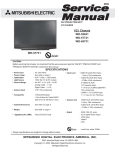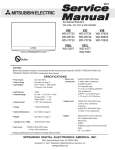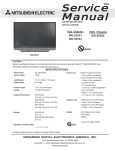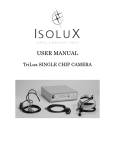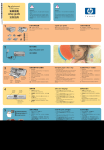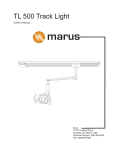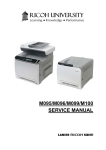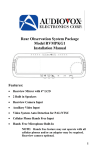Download System - WalkAide
Transcript
System User Manual © 2007 Innovative Neurotronics. All rights reserved. All trademarks and registered trademarks are the property of their respective holders. LM01- 6 4/09 Caution: USA Federal Law restricts this device to sale by or on the order of a physician. Table of Contents 1.0 The WalkAide Stimulator System Indications of Use Contraindications Warnings About FES WalkAide Specific Warnings Precautions Adverse Reactions Cautions 2.0 Symbols and Definitions 0086 EC REP 3 3 3 4 5 6 7 8 9 3.0 WalkAide Controls and Indicators 10 4.0 General Operating Instructions 4.1 Applying the WalkAide 11 Medical Device & QA Services 76, Stockport Road WA15 7SN United Kingdom e-mail: [email protected] 2 4.2 Removing the WalkAide 4.3 Skin Care 4.4 Instructions for Exercise Mode 4.5 Changing the Battery 4.6 Changing the Electrodes 12 14 14 15 16 17 5.0 Maintenance and Cleaning of the WalkAide and Accessories 18 6.0 Troubleshooting—Frequently Asked Questions 19 7.0 Wearing Schedule 21 8.0 22 WalkAide User Statement of Understanding 9.0 Medical ID Card 23 10.0 Technical Information—Specifications 25 1 1.0 The WalkAide Stimulator System Indications of Use The WalkAide is a battery-operated, single channel electrical stimulator that is used to improve walking ability by stimulating a foot lift at the appropriate time during the step cycle. A foot drop occurs when a person is unable to actively lift the foot, resulting in the foot slapping on the floor or the toes dragging during walking. The WalkAide stimulates the nerve as it passes below the knee and activates the muscles that raise the foot. The WalkAide Patient Kit consists of a WalkAide control unit, a WalkAide cuff, four electrodes, electrode lead cable, and foot sensor (optional item) as shown in Fig 1. The Innovative Neurotronics WalkAide System is an external functional neuromuscular stimulator system that is intended to address foot drop in patients who have sustained damage to upper motor neurons or pathways in the brain or spinal cord. During the swing phase of walking, the WalkAide electrically stimulates the appropriate muscles that cause ankle dorsiflexion and may thus improve the patient’s walking ability. Medical benefits of Functional Electrical Stimulation (FES) may include prevention of muscle disuse or weakness, increased local blood flow, muscle strengthening, and maintained or increased joint range of motion. Contraindications m Do not use on persons with implanted demand type cardiac pacemakers or defibrillators. mDo not place the electrodes in the carotid sinus region (throat). Laryngeal or pharyngeal spasms may occur when the electrodes are placed across the throat or in the mouth. Figure 1: WalkAide System 2 m Do not place the electrodes over malignant tumors. m Do not place the electrodes over areas in which symptoms of existing thrombosis are present. m Do not use if person has a history of seizure disorder. 3 Warnings About FES Monitoring Equipment—The use of FES may interfere with the proper functioning of electronic monitoring equipment such as EKG machines. However, the operation of the FES device will not be affected by the use of electronic monitoring equipment. Electrodes—The use of electrodes not supplied by Innovative Neurotronics may diminish results or increase risk of burns or discomfort. Do not place electrodes over open wounds, broken skin or metal objects beneath the skin such as surgical staples. Pregnancy—The safety of FES for use during pregnancy has not been established. Hospital Equipment—Do not use simultaneously with high frequency hospital equipment (e.g. diathermy equipment). It may result in burns at the site of the stimulator electrodes and possible damage to the stimulator. Skin Irritation—Improper or prolonged use of electrodes may result in increased risk of skin irritation or burns and decreased effectiveness. Infrequently, there is an allergic response to the electrode adhesive or gel. Do not place electrodes on skin which is already irritated as this will increase the risk of discomfort with stimulation or skin burns. Medical Supervision—FES should only be used under the medical supervision of a physician and a qualified clinician. Two-Way Radios—Care should be taken while using FES therapy in close proximity (e.g. less than 1 meter) to devices which emit radio frequencies such as cellular phones or two-way radios as some types of transmitters may cause undesirable stimulation to the user. 4 Defibrillator—External defibrillation of a person wearing a FES device can damage the device or injure the patient even when the device is turned off. Under some circumstances there may be risk of burns under the electrode sites during defibrillation. To eliminate any risk, the FES electrodes should be removed before defibrillation paddles are applied. Chronic Stimulation—Effects of long term chronic stimulation are unknown in this particular application. WalkAide Specific Warnings Walking—Care should be taken when using the WalkAide for people who experience dizziness or have difficulty maintaining balance. The WalkAide is not designed to prevent falling. Electrodes—The user should not relocate the position of the electrodes within the cuff. Do not use the WalkAide without electrodes. Placement—Never use the WalkAide on any area of the body other than the leg. Stimulation—Stop using the WalkAide if stimulation does not come on at the appropriate time when walking and/or there is a change in the sensation perceived while the stimulation is on. Environment—WalkAide is not intended for use within flammable environments such as oxygen and anesthetics. Impact—Care should be taken to minimize excessive impact to the WalkAide Control Module. This includes standing or kneeling on the unit, or impact from any hard surfaces. 5 Precautions Heart Disease—Use caution in applying electrical stimulation to persons suspected of having heart disease. More clinical data is needed to show that such persons will not experience adverse results. Sensory Deprivation—Use caution when placing electrodes on areas of the skin with reduced response to normal sensory stimuli, due to the risk of skin burns. Children—FES devices should be kept out of the reach of children. Epilepsy—Use caution in applying electrical stimulation to persons suspected of having epilepsy. More clinical data is needed to show that such a person will not experience adverse events. Recent Surgery—Do not use FES following recent surgery where muscle contraction may disrupt the healing process. Electrodes—Do not use lotion or oil in the area that the electrodes make contact with the skin. Stimulation may not be effective. Proper Use—The safety and efficacy of FES depends on the proper use and handling of the FES system. Improper use of the device or electrodes can result in injury to the patient. Regularly check accessories for wear and replace as needed. Electrodes should be firmly secured to the skin. Never use the WalkAide if it appears to be malfunctioning. If there is a change in the way it usually works (i.e. change in sensation, surging of stimulation, intermittent stimulation) do not use the WalkAide and contact your clinician immediately. 6 Operating Equipment—The stimulator should not be used while operating potentially dangerous equipment such as automobiles, power lawn mowers or large machinery. Abrupt changes in stimulation level could create a hazard. Sleeping—The WalkAide should not be worn or used while sleeping or bathing. Heat and Cold—The use of heat or cold producing devices such as electric blankets, heating pads or ice packs may affect the electrodes or the person’s circulation and increase the risk of injury. A medical doctor and clinician should be consulted before using with FES. Adverse Reactions Skin irritation and burns beneath the electrodes have been reported with the use of surface functional electrical stimulation devices. Do not leave the electrodes in place for long periods of time without checking or cleaning the skin underneath them. It is normal to observe somewhat reddened areas under the electrode placements. However, the redness should disappear within an hour. Signs of irritation are maintained redness, small pimple-like lesions or blisters. DO NOT continue stimulation over irritated skin. Notify the medical doctor if these conditions persist and discontinue use of the WalkAide until the problem is resolved. 7 Cautions Functional electrical stimulation (FES) is the process of using electrical stimulation to activate muscles. Basic rules of FES use include: 1. ALWAYS use the WalkAide under the specific instruction of an experienced clinician. 2. N EVER use the WalkAide in a situation where an unexpected or unusual stimulus may occur, such as driving or operating motorized equipment. 3. D O NOT use the WalkAide if the equipment is not operating properly. 4. NEVER use the WalkAide unit with frayed or broken leads. 5. ALWAYS handle the unit carefully. DO NOT expose the unit to water, excessive heat or vibration. 6. DO NOT place electrodes anywhere other than on one leg below the knee. 7. A VOID dropping the WalkAide unit. Although robustly designed, damage may occur that could cause the unit to malfunction. 2.0 Symbols and Definitions Meaning of Symbols Attention, consult accompanying documents Type BF Equipment Indicates Error Signal Indicates battery location and positioning Indicates impulse, STIM button Indicates connector location for optional Patient Foot Sensor Indicates input/output connector location for WalkLink Indicates exercise button 8. T he WalkAide should ONLY be used with approved accessories and electrodes. 9. DO NOT open the unit other than to replace the battery. The WalkAide has no user or clinician serviceable parts inside the control module enclosure. 10. Turn off the unit if sitting for an extended period of time. 8 9 3.0 WalkAide Controls and Indicators Red visual indicator for error and low battery voltage (4) Exercise Button (3) 4.0 General Operating Instructions Green blinking light indicates that power is on with adequate battery power (2) Amber blinking light indicates the presence of STIM (5) STIM Button (6) Intensity Knob (1) Figure 2: Top view of WalkAide unit Audible Alarms: 1. Low Battery: The WalkAide is designed for single-handed application and removal (Figure 4). It may take a bit of practice to develop a routine that works best for each person. The WalkAide is applied directly to the leg and can be easily worn under most clothing. Applying Tightening An audible alarm every minute with red and green blinking lights. 2. Depleted Battery: An audible alarm every 1-2 seconds with red and green blinking lights 3. Heel/Foot Sensor: An audible alarm of two beeps every two seconds indicates that Heel/Foot Sensor is not connected, if it is configured for the Heel/Foot Sensor. 4. Device Error: An audible alarm of 4 beeps every 2 seconds. Heel and Foot Sensor Battery Compartment WalkLink Connector for standard AA Output Connector Connector [for clinician use only] (10) for Electrode Lead [if provided to user] (8) Alkaline battery (9) Cable (7) Figure 4: One-handed application The clinician will find the optimal stimulation areas and set up the placements of the electrodes on the initial visit. The electrode placement will be marked on the inside of the cuff and will not need to be adjusted within the cuff afterwards. The cuff must be positioned on the leg correctly to achieve effective and efficient stimulation. Back 10 Left side Front Figure 3: Back, side(s) and front views of WalkAide unit Right side 11 4.1 Applying the WalkAide 4.1 Applying the WalkAide (cont’d) 1. The skin in the area around the head of the fibula should be clean and free of lotions. Failure to adequately prepare the skin may cause improper contact and provide less than ideal stimulation. 6. If a Foot Sensor was provided, place the Foot Sensor into the shoe and plug the connector into the side of the WalkAide unit marked . 2. Always make sure the WalkAide unit is turned OFF prior to handling. The Intensity Knob (1) should be positioned at O. 3. Sit in a chair with the leg slightly extended. 4. a) Add a small amount of water to area where electrodes go to improve stimulation. 4. b) Moisten the electrodes with water and place the cuff in the correct position below the knee. The electrodes will be on the outside of the leg and the WalkAide unit will be on the inside of the leg just below the knee. 7. Turn the WalkAide unit ON by rotating the light blue Intensity Knob (1) in a clockwise direction. A green light (2) will flash intermittently. 8. Adjust the intensity to the level determined by the clinician— somewhere between 1 and 8. 9. Check the intensity of the stimulation and quality of the foot movement by pushing and holding the large STIM button (6) for 1 to 2 seconds (Figure 6). 5. Wrap the Velcro strap around the back of the leg to secure the WalkAide system in place (Figure 5). Figures 6 and 7: Testing the stimulation and proper placement of the WalkAide This button is labeled . The intensity level of the stimulation or the placement of the cuff may need to be adjusted to attain optimal foot movement. Always adjust the intensity level to the level determined by the clinician. Higher levels of stimulation may result in discomfort or skin irritation. 12 Figure 5: WalkAide and cuff 10. Stand up and walk as usual (Figure 7). The WalkAide can be used with or without shoes, although proper footwear is recommended. 13 13 4.2 Removing the WalkAide 4.4 Instructions for Exercise Mode 1.Turn the WalkAide unit OFF by rotating the Intensity Knob (1) in a counter-clockwise position until it clicks at O. 2. Release the Velcro strap at the back of the leg. The Exercise Mode is NOT to be used while walking. It is designed to apply repeated stimulation to the leg while at rest for a period of time determined by the clinician. 3.Slowly peel the cuff away from the leg taking extra care with the removal of the electrodes from the skin. 1. Assume a comfortable sitting position and apply the WalkAide unit as described (Figure 8). 4. Place the plastic backings onto the electrodes. 5. Check the skin for signs of irritation. 6.For storage, place plastic backings on electrodes and then place the cuff containing the electrodes and WalkAide unit in a resealable plastic bag so that the electrodes do not dry out. Keep the resealable plastic bag and unit out of direct sunlight. The WalkAide may be worn all day but must be removed at night before going to bed. Be sure to turn the WalkAide unit OFF to prevent unintentional stimulation during handling and to conserve battery power when it is not being worn. 4.3 Skin Care Always check the skin prior to and after using the WalkAide. It is normal to have somewhat reddened areas under the electrode placements as this indicates increased blood flow in these areas. Suggestions to prevent skin irritation: m R emove electrodes GENTLY and in the direction that the body hair lies. m D O NOT place electrodes over irritated areas. The clinician may be able to suggest alternative sites. m DO NOT place electrodes over skin coated with lotions or oils. 14 Figure 8: Use Exercise Mode only while seated 2. Adjust the Intensity Knob (1) and then press the Exercise Button (3) for more than 3 seconds (Figure 9). An amber light (5) will flash on the top of the WalkAide unit and will beep. This will start the intermittent stimulation. Intensity Knob (1) Exercise Button (3) Amber blinking light indicates the presence of STIM (5) Figure 9: Using the Exercise Mode 15 3. The clinician has already programmed the duration of this exercise session and will provide instructions on the appropriate level of stimulation intensity, which may or may not be the same as the intensity used for walking. 4. The WalkAide unit will stop stimulating when the programmed exercise session is finished. 5. Turn the unit OFF. 6. After 1–2 seconds, the WalkAide can be turned on again (automatically returning to walking mode) and the stimulation intensity can be adjusted to the desired level for walking. 4.5 Changing the Battery Green visual indicator for low battery (2) 4.6 Changing the Electrodes For proper hygiene and maximum effectiveness, the electrodes should be replaced every 1 to 2 weeks. Pull back the Velcro cover over the leads on the front of the cuff and disconnect the black and red leads between the WalkAide and the electrodes. Make sure the electrode placement is clearly identified on the inside of the cuff before removing electrodes (Figures 11 and 12). Place new electrodes in the same positions and feed the leads through the holes toward the outside of the cuff. Red visual indicators for low battery (4) The expected battery life is about 42 hours of continuous use. Dependent upon the use, the batteries could last from 1 to 3 weeks. When the battery is low, the red and green visual indicator lights will flash and an audible alarm will sound 2 long beeps each minute indicating that the battery should be replaced immediately. To replace the battery, grip the sides of the gray cover to the battery Figure 10: compartment and pull open (Figure 10). The Changing the battery WalkAide requires a single alkaline AA battery to operate. DO NOT use rechargeable or other types of batteries. When the alkaline battery becomes depleted, please dispose of the battery properly in accordance with all local and national regulations. 16 Figures 11 and 12: Changing the electrodes (inside and outside views) Connect the leads from the electrodes to the WalkAide Electrode Lead Cable (Figure 12). m The BLACK lead is connected to the BACK electrode. m The RED lead is connected to the FRONT electrode. 17 5.0 M aintenance and Cleaning of the WalkAide and Accessories l WalkAide Maintenance Other than replacing the battery periodically, this unit does not require any user maintenance. All other servicing needs should be referred to the clinician and manufacturer. l l l l 18 Cleaning the WalkAide A damp cloth with MILD detergent may be used to wipe the outside of the WalkAide unit. DO NOT use a strong cleaning solution or one that contains alcohol. DO NOT immerse the WalkAide unit in water. Storing the WalkAide If the WalkAide is to be stored for an extended period of time and not used, remove the battery from the battery compartment. Washing the WalkAide Cuff Remove the electrodes and the WalkAide unit prior to washing. The fabric cuff with the plastic insert can be washed together in COLD WATER in the gentle cycle of the washing machine or hand-washed, then hung to dry. DO NOT place the plastic insert or the fabric cuff in the dryer. Disposal of the Device When the device has reached the end of its useful life, please dispose of properly, in accordance with all local and national regulations. 6.0 Troubleshooting—Frequently Asked Questions 1. Why don’t the control and indicator lights work? This is caused by low battery voltage. Insert a fresh battery. If the green light is still not blinking, discontinue use of the WalkAide and contact the clinician. 2. Why is the green light blinking while the red light is on? This is an error message. Turn the WalkAide off and wait 2-3 seconds. Turn the WalkAide back on and check to see that the green light is blinking and the red light is off. If not, discontinue use of the WalkAide and contact the clinician. 3. What if the foot does not lift as far as it should? The amber light should be blinking during stimulation to indicate that a stimulus is being delivered through the electrodes. Try repositioning the WalkAide, adjust the intensity level or replace or re-wet the electrodes. If the foot lift is still insufficient then discontinue use and schedule an appointment with the clinician. 4. Why doesn’t the stimulation come on at the appropriate time? This generally indicates the cuff may have shifted or a change in the walking pattern. Discontinue use and schedule an appointment with the clinician so that appropriate adjustments can be made to the WalkAide. 5. Is it okay to use lotion or oils on the leg? No—do not apply lotions or oils to the leg. Clean the area under the electrodes each day with a mild soap and water. Make sure the leg is clean and moist at the electrode site before applying the WalkAide. 19 6.0 Troubleshooting—Frequently Asked Questions (cont’d) 6. How long do the electrodes last? The electrodes should be changed approximately every 1-2 weeks. 7. How long does the battery last? Each AA battery will last between 1 and 3 weeks depending upon individual usage of the WalkAide. A low battery is indicated by red and green flashing lights and a beep once per minute. 8. Why are the WalkAide and accessories stored in a resealable plastic bag? This helps to keep the electrodes from drying out while not in use. Be sure to cover the electrodes with the plastic backings after removing the WalkAide and before placing in the resealable plastic bag. 9. What indicates that the WalkAide is on? A green blinking light positioned near the Intensity Knob indicates that the power is on with adequate battery power. 10. Under what circumstances should the clinician be contacted? Contact the clinician any time there is/are: additional questions or concerns about the WalkAide and its proper use; a change in the medical condition or walking pattern; any WalkAide accessory shows excessive wear and tear; the WalkAide does not function properly; an error message light is seen; sustained skin irritation; and/or a request by the medical doctor. 20 7.0 Wearing Schedule ON Time OFF Time Days 1-3 15-60 minutes 30 minutes Days 4-6 1-3 hours 30 minutes Days 7-9 3-5 hours 30 minutes Days 10-12 5-6 hours 1 hour Days 13-14 6-8 hours 1 hour Helpful Hints to Enhance the Break-In Period • Remove the WalkAide system every 2 hours to check skin integrity. • Slowly work into full-time wearing of the WalkAide system. • Remove the cuff at regular intervals and inspect the skin under the electrodes. These areas will be pink due to increased blood flow under the electrodes. • DO NOT use lotions or oils to soften the skin. Make sure the skin is clean and try prior to applying the cuff. • If desired, shaving the leg should be done in the evening to prevent potential irritation during daily wear. • If soreness or irritation occurs in the area under the electrodes, reduce the wearing time and contact your WalkAide clinician. • Wet the electrodes with plenty of water before applying the cuff. Make sure you change the electrodes approximately every 1-2 weeks, and cover them each night with the plastic backing tabs. 21 8.0 WalkAide User Statement of Understanding 9.0 Medical Device ID Card I,____________________, have reviewed the contents of the WalkAide System User Manual with my practitioner. I understand the general operating instructions and general maintenance of the WalkAide System. I have been advised to follow the wearing schedule and been advised to contact my practitioner immediately with any questions I may have with the WalkAide System. Medical Device ID Patient Name: Practitioner: Phone : Device: WalkAide System Innovative Neurotronics, Inc. • 3600 N. Capitol of Texas Highway Bldg B • Suite 150 • Austin, TX 78746 • 1-888-884-6462 This card may be cut out and placed in your wallet for medical device identification purposes. Print Patient Name: Date: Patient Signature: Date: Practitioner Signature: Date: 22 23 9.0 Medical Device ID Card (cont.) Innovative Neurotronics, Inc. 1.888.884.6462 www.ininc.us The Innovative Neurotronics WalkAide System is an external functional neuromuscular stimulator system. This FDA cleared medical device is battery operated and is worn below the knee. It is worn to assist patients diagnosed with foot drop in their walking ability. FDA Clearance K052329 • ISO 13485:2003 CE certified 10.0 Technical Information—Specifications Size 8.2cm(H) x 6.1cm(W) x 2.1cm(T) Weight 87.9 g Power Source One 1.5 V Alkaline AA battery Maximum Current 200 mA at 500 ohm; 121 mA at 1 K ohm Maximum Voltage 121 V at 1 K ohm; <150 V at 1 M ohm Number of Modes 2 - Exercise, Walking Number of Channels 1 Pulse Type Asymmetrical Biphasic Pulse Width 25-300 microseconds (Adjustable) Maximum Stimulation Period 3 seconds Stimulation Trigger Source Tilt or Heel Sensor Controls and Indicators • ON/OFF/Intensity; Stimulation, Exercise • Error Shipping and Storage Conditions: Device (Long Term) Temperature: -4° – 140°F (-20° – +60° C) Relative Humidity: 95% max., non-condensing Electrodes (Long Term) Temperature: 41° – 80.6°F (5° – 27° C) Humidity: 35 – 50% Electrodes (Short Term - less than 1 month) Temperature: 32° – 104° F (0° – 40° C) Humidity: 35 – 50% Do not hesitate to contact your clinician should you have any questions regarding this device and its safe operation and use. 24 If further assistance is required, please contact: Innovative Neurotronics, Inc. 3600 N. Capital of Texas Highway, Building B, Suite 150 Austin, TX 78746-3211 888-884-6462 • www.walkaide.com 25
























